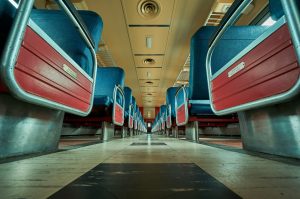How Transportation Technologies Are Solving Complex Urban Challenges
The world is constantly evolving, and so are our cities. As more people migrate to urban areas, the challenges faced by these cities also increase. One of the biggest challenges for urban areas is transportation. With population growth, there is an increase in traffic congestion, air pollution, and accidents. However, with the advancements in technology, transportation is being revolutionized to solve these complex urban challenges. In this article, we will explore the role of transportation technologies in addressing the major issues faced by metropolitan cities.
The Rise of Smart Transportation Systems
Transportation technologies have transformed the way people commute in urban areas. The development of smart transportation systems, also known as Intelligent Transportation Systems (ITS), has been one of the most significant innovations in this field. These systems use advanced technologies such as sensors, cameras, and artificial intelligence to improve the overall transportation network.
Reducing Traffic Congestion
One of the major issues faced by urban areas is traffic congestion. According to a study, commuters in the United States spend an average of 54 hours per year stuck in traffic. This results in a waste of time, money, and increased levels of air pollution. However, with the implementation of smart transportation systems, traffic congestion is being reduced significantly.
ITS use real-time data from sensors and cameras to monitor traffic flow and identify congested areas. This information is transmitted to drivers through digital display boards, mobile applications, and GPS devices, allowing them to plan their routes accordingly. This not only saves time but also reduces the number of cars on the road, thus reducing traffic congestion.
Improving Public Transportation
In addition to reducing traffic congestion, transportation technologies are also improving public transportation. With the use of ITS, public transport systems are becoming more efficient and reliable. For instance, smart ticketing systems allow passengers to pay their fare through their smartphones, reducing the need for physical tickets and long queues.
Moreover, real-time tracking systems equipped with GPS technology enable passengers to know the exact arrival time of buses or trains. This makes the waiting time more manageable and helps people plan their journeys more efficiently. Additionally, the use of electric buses and trains powered by renewable energy sources is reducing air pollution, making public transportation more eco-friendly.
Solutions for Sustainable Mobility
The rising concerns of air pollution and climate change have led to a shift towards sustainable mobility solutions. Transportation technologies are playing a crucial role in achieving this goal by making transportation more eco-friendly and sustainable.
Encouraging the use of Electric and Autonomous Vehicles
Electric and autonomous vehicles are considered to be the future of transportation. With zero emissions and reduced dependence on fossil fuels, electric vehicles are a sustainable solution to combat air pollution. The use of autonomous vehicles, on the other hand, can reduce accidents caused by human error. These vehicles are equipped with advanced sensors and artificial intelligence that can detect and respond to potential hazards, making the roads safer for all users.
Promoting Micro-Mobility Options
In recent years, micro-mobility options such as bike-sharing and e-scooters have gained popularity in urban areas. These modes of transportation are not only sustainable but also help reduce traffic congestion. With the use of mobile applications, users can easily locate and unlock these vehicles, making them a convenient and cost-effective mode of transportation.
The Future of Transportation Technologies
The advancements in transportation technologies have undoubtedly transformed the urban transportation landscape. However, there is still more to come. With the rise of concepts such as hyperloop and flying taxis, the future of urban transportation looks exciting.
The hyperloop, a high-speed transportation system that uses vacuum-sealed tubes to transport passengers and cargo, is expected to significantly reduce travel time between cities. Similarly, flying taxis, which use vertical take-off and landing (VTOL) technology, have the potential to revolutionize the way people commute within cities.
Conclusion
In conclusion, transportation technologies are solving complex urban challenges in various ways. From reducing traffic congestion and improving public transportation to promoting sustainable mobility, the advancements in this field are making our cities more livable. As technology continues to evolve, we can look forward to a more efficient, eco-friendly, and safe transportation system in the future.











